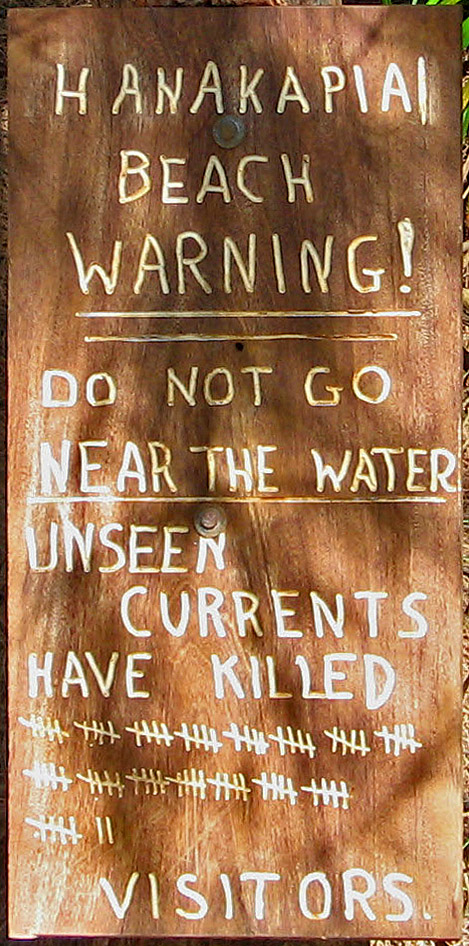Hanakapiai Beach on:
[Wikipedia]
[Google]
[Amazon]
 Hanakāpīʻai Beach is a
Hanakāpīʻai Beach is a
Extensive journal with photos
Hanakapiai Beach Info
{{coord, 22.2092, N, 159.598, W, source:GNIS_type:landmark, display=title Beaches of Kauai
 Hanakāpīʻai Beach is a
Hanakāpīʻai Beach is a beach
A beach is a landform alongside a body of water which consists of loose particles. The particles composing a beach are typically made from rock, such as sand, gravel, shingle, pebbles, etc., or biological sources, such as mollusc s ...
in the Hawaiian islands
The Hawaiian Islands ( haw, Nā Mokupuni o Hawai‘i) are an archipelago of eight major islands, several atolls, and numerous smaller islets in the North Pacific Ocean, extending some from the island of Hawaii in the south to northernmost ...
located on Kauai
Kauai, () anglicized as Kauai ( ), is geologically the second-oldest of the main Hawaiian Islands (after Niʻihau). With an area of 562.3 square miles (1,456.4 km2), it is the fourth-largest of these islands and the 21st largest islan ...
's Nā Pali Coast. The beach is approximately from the start of the Kalalau Trail, a very popular hiking trail which is located at Keʻe Beach. It is also about 2 miles from Hanakapiai Falls
Hanakapiai Falls or Hanakapi'ai Falls is an approximately high waterfall located in Hawaii, United States on the Na Pali side of the island of Kauai
Kauai, () anglicized as Kauai ( ), is geologically the second-oldest of the main Hawaiia ...
. During summer months, Hanakāpīʻai Beach's sandy shore line is clearly visible; during winter months, dangerously powerful waves and high tides wash away the sandy shore line. The beach is remotely located with no road access. The word ''Hanakāpīʻai'' literally means "bay sprinkling food" in Hawaiian.
Hanakāpīʻai Beach is a popular tourist attraction; however, like many beaches on the Nā Pali Coast, strong rip current
A rip current, often simply called a rip (or misleadingly a ''rip tide''), is a specific kind of water current that can occur near beaches with breaking waves. A rip is a strong, localized, and narrow current of water which moves directly away ...
s, as well as high surf, dangerous shore breaks and other hazardous ocean conditions make Hanakāpīʻai Beach extremely dangerous. The Nā Pali Coast is especially treacherous because there are no major reef
A reef is a ridge or shoal of rock, coral or similar relatively stable material, lying beneath the surface of a natural body of water. Many reefs result from natural, abiotic processes—deposition of sand, wave erosion planing down rock ...
s to hinder potent ocean currents.
Kauai's geography makes Hanakāpīʻai conditions even more hazardous; in the event that one gets caught in a rip current (or otherwise swept out to sea) the nearest safe shore area is approximately six miles away. The currents in the region are so powerful that the bodies of at least 15 drowning victims have yet to be recovered. According to the local newspaper, from 1970 to 2010 about 30 people are known to have drowned here. Tourists often refer to a warning sign with 82 tally marks (as of August 2014) counting drowning victims. It has no official sponsor and this count is highly speculative.
See also
*List of beaches in Hawaii
This is a list of notable Hawaii beaches sorted by island alphabetically, clockwise around each island, listed by beach name followed by location.
Hawaii Island (Big Island)
Kauai
Some of the beaches found in Kauai are:
Lānai
Maui
...
References
External links
*Extensive journal with photos
Hanakapiai Beach Info
{{coord, 22.2092, N, 159.598, W, source:GNIS_type:landmark, display=title Beaches of Kauai